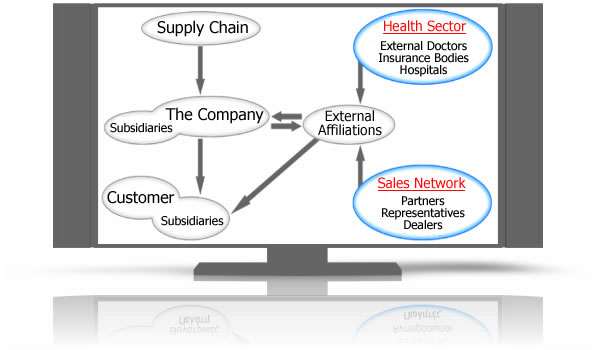CBM™ - The Proprietary Business Model of EiS
The development of the business model of EiS began in early 1996. Today after 14 years growth is capable of describing and establishing rules for any kind of “Sales Type” on this planet!
Nothing new you could say and you would be right only if you did not know its secret of origin. A well kept secret for 14 years in order to mature like a good vintage wine. For all of you hungry minds ... learning starts here with a brief update!
The heart and soul of the model comes from the wonderful world of Applied Mathematics, in particular the Principle of Virtual Work and the way it is applied in the method of Finite Elements. In this world the engineer through space-time relations can solve and optimize any problem that arises.
As an engineer, Lefteris Georgiou decided out of simple curiosity to try out this theory in the field of Business Trade. Very soon he realized that:
"The Dynamical Process of Buying and Selling Closely Resembles to a Three-Dimensional Engineering Model that is a function of Time!"
All there was left to define the Rules and their Behavioral Characteristics that would allow the:
"Interconnection between the Type of the Sales Item and the way it is Marketed"
The simplest and most basic element in a three-dimensional space is the flat or curved Pyramid. 4 sides and 4 vertices! The number 4 dear readers is a Magic Number! Thus the adopted Building Block in our model, based on the above stated idea, is the Pyramid that carries at its four vertices its unique characteristics. The first 3 characteristics define the “Sales Item” and the 4th sets the “Sales Behavior” which in effect describes how the “Sales Item” is marketed.
These four unique characteristics that describe the “Sales Item” and define the way it is marketed are: “STYLE”, “TYPE”, “STATE” and “SALES TYPE”. Each one of them carries a set of possible characteristic values as shown below.

The 4 Corner Stones of C.B.M.™
There are 4 cornerstones in the model (again, this magic number 4!):
- The Supply Chain to the Company.
- The Company and its Subsidiaries.
- The Customer and its Subsidiaries.
- Affiliated External Organizations.
CBM™ concentrates and manages all those factors that affect the daily operations of a business. The company could have subsidiaries in different geographical locations. Company operations require Suppliers. Products and/or Services from the Suppliers are used as raw materials or Products for Resale. The Company Products and/or Services are then marketed to its Customers and/or its Sister Companies. Finally Affiliated External Organizations associated with the Customer and/or the Company are involved for the marketing and distribution of the Company’s Products and/or Services.

CBM™ differentiates the Affiliated External Organizations into two categories. These two categories refer to:
- A Sales Network for the Commercial Sector that may include:
- Partners
- Sale Representatives and
- External Dealers
- Medical Affiliations for the Health Sector that may include:
- External Doctors
- Medical Insurance Bodies and
- External Nursing Institutions such as Hospitals and Health Centres.
The above points are the backbone of our business model and quoted for the reader to help him/her understand that a complex issue such as the process of “selling and buying” may be defined and used in a simple manner.


